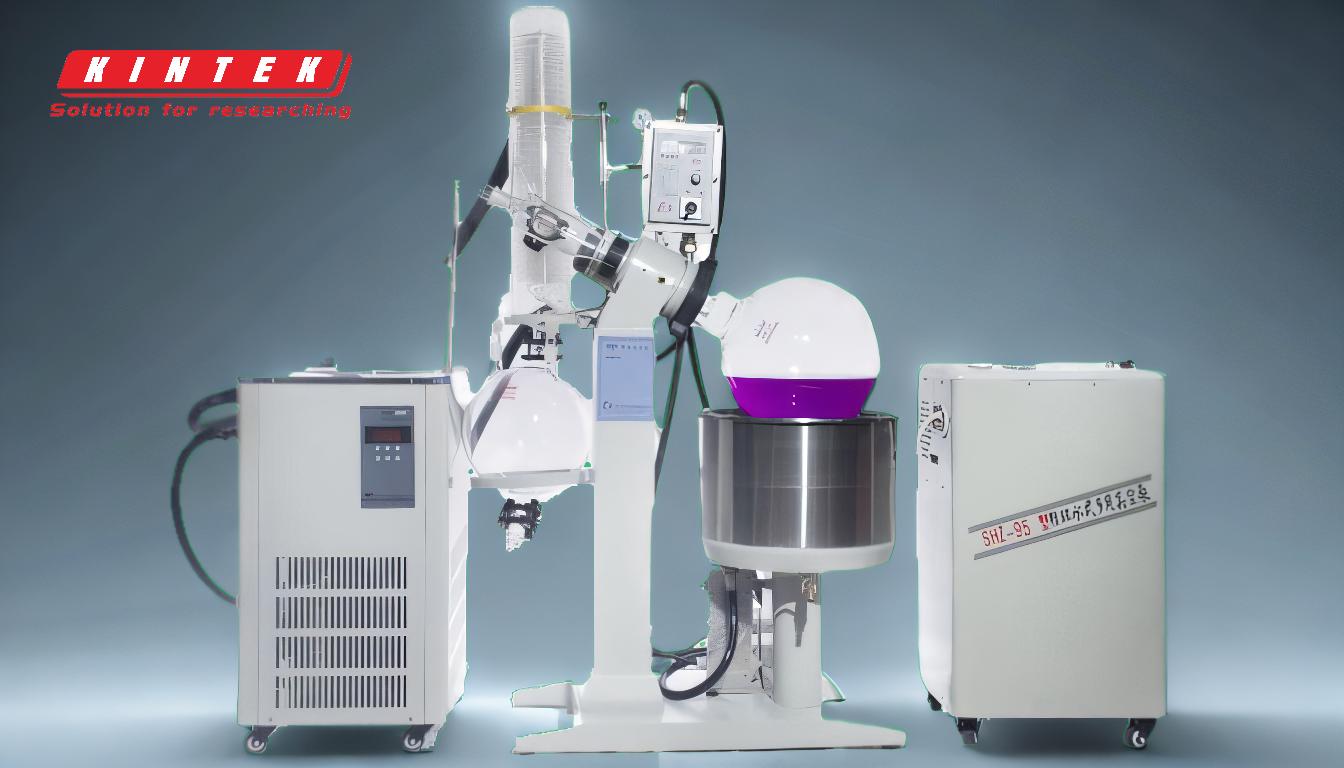Rotary evaporators are essential laboratory equipment used for solvent removal under reduced pressure, but they come with inherent risks if not operated safely. Key safety precautions include avoiding entanglement with rotating parts, preventing implosions and explosions, managing solvent vapors, and ensuring proper handling of glassware and hot components. Personal protective equipment (PPE) such as gloves, goggles, and lab coats must be worn, and the device should be operated in a well-ventilated area or under a fume hood. Additionally, users must empty the solvent collection flask before use, use a bump trap, and ensure the water bath temperature does not exceed the boiling point of the solvent. By following these precautions, users can minimize risks and ensure safe operation.
Key Points Explained:

-
Avoiding Entanglement with Rotating Parts
- Rotary evaporators have rotating components that can pose entanglement hazards.
- Loose clothing, hair, necklaces, or other jewelry can get caught in the rotating parts, leading to severe injuries.
- Always ensure that all loose items are secured and avoid wearing dangling accessories while operating the equipment.
-
Preventing Implosions and Explosions
- Implosions: Flawed or damaged glassware can implode under vacuum conditions, causing shards to scatter. Always inspect glassware for cracks or defects before use.
- Explosions: Concentrating unstable impurities or air-reactive materials under vacuum can lead to violent reactions. Ensure that the system is free of leaks and avoid concentrating unstable compounds.
-
Managing Solvent Vapors
- Solvent vapors can be hazardous if inhaled or exposed to open flames.
- Operate the rotary evaporator in a well-ventilated area or under a fume hood to disperse vapors safely.
- When disassembling the equipment, ensure that residual vapors are managed carefully to avoid exposure.
-
Proper Handling of Glassware and Hot Components
- Glassware should be handled with care to avoid breakage, which can lead to cuts or contamination.
- Use clips to securely fasten the flask and bump trap to prevent them from detaching during operation.
- The water bath and other heated components can cause burns. Always use appropriate PPE, such as heat-resistant gloves, when handling hot parts.
-
Personal Protective Equipment (PPE)
- Wearing PPE is essential to protect against chemical splashes, burns, and other hazards.
- Goggles protect the eyes from splashes, gloves shield the hands from chemicals and heat, and a lab coat provides overall protection.
-
Emptying the Solvent Collection Flask
- Before starting a new evaporation process, always empty the solvent collection flask to prevent accidental mixing of incompatible chemicals, which could lead to dangerous reactions.
-
Using a Bump Trap
- A bump trap prevents the solution from splashing into the condenser, which can contaminate the system or cause pressure fluctuations.
- Ensure the bump trap is properly installed and securely fastened.
-
Monitoring Water Bath Temperature
- The water bath temperature should not exceed the boiling point of the solvent being evaporated.
- Excessive heat can cause rapid boiling, leading to bumping or splashing, which can compromise safety and the integrity of the experiment.
-
Proper Disposal of Solvents and Liquids
- Follow laboratory protocols for the disposal of solvents and other liquids to prevent environmental contamination and health risks.
- Never pour hazardous chemicals down the drain unless explicitly permitted.
-
General Operational Safety
- Always read and follow the manufacturer’s instructions for the specific rotary evaporator model.
- Regularly inspect the equipment for wear and tear, and replace damaged parts promptly.
- Train all users on proper operation and safety protocols to minimize the risk of accidents.
By adhering to these safety precautions, users can operate rotary evaporators safely and effectively, reducing the risk of accidents and ensuring a productive laboratory environment.
Summary Table:
| Safety Precaution | Key Actions |
|---|---|
| Avoiding Entanglement | Secure loose items, avoid dangling accessories. |
| Preventing Implosions/Explosions | Inspect glassware, avoid unstable compounds. |
| Managing Solvent Vapors | Operate in ventilated areas, use fume hoods. |
| Handling Glassware & Hot Components | Use clips, wear heat-resistant gloves. |
| Wearing PPE | Use goggles, gloves, and lab coats. |
| Emptying Solvent Flask | Clear flask before use to prevent chemical mixing. |
| Using a Bump Trap | Install securely to prevent splashing. |
| Monitoring Water Bath Temperature | Keep below solvent boiling point. |
| Proper Solvent Disposal | Follow lab protocols, avoid drain disposal. |
| General Operational Safety | Follow manufacturer instructions, inspect equipment regularly. |
Ensure your lab's safety with expert advice—contact us today for more tips!










